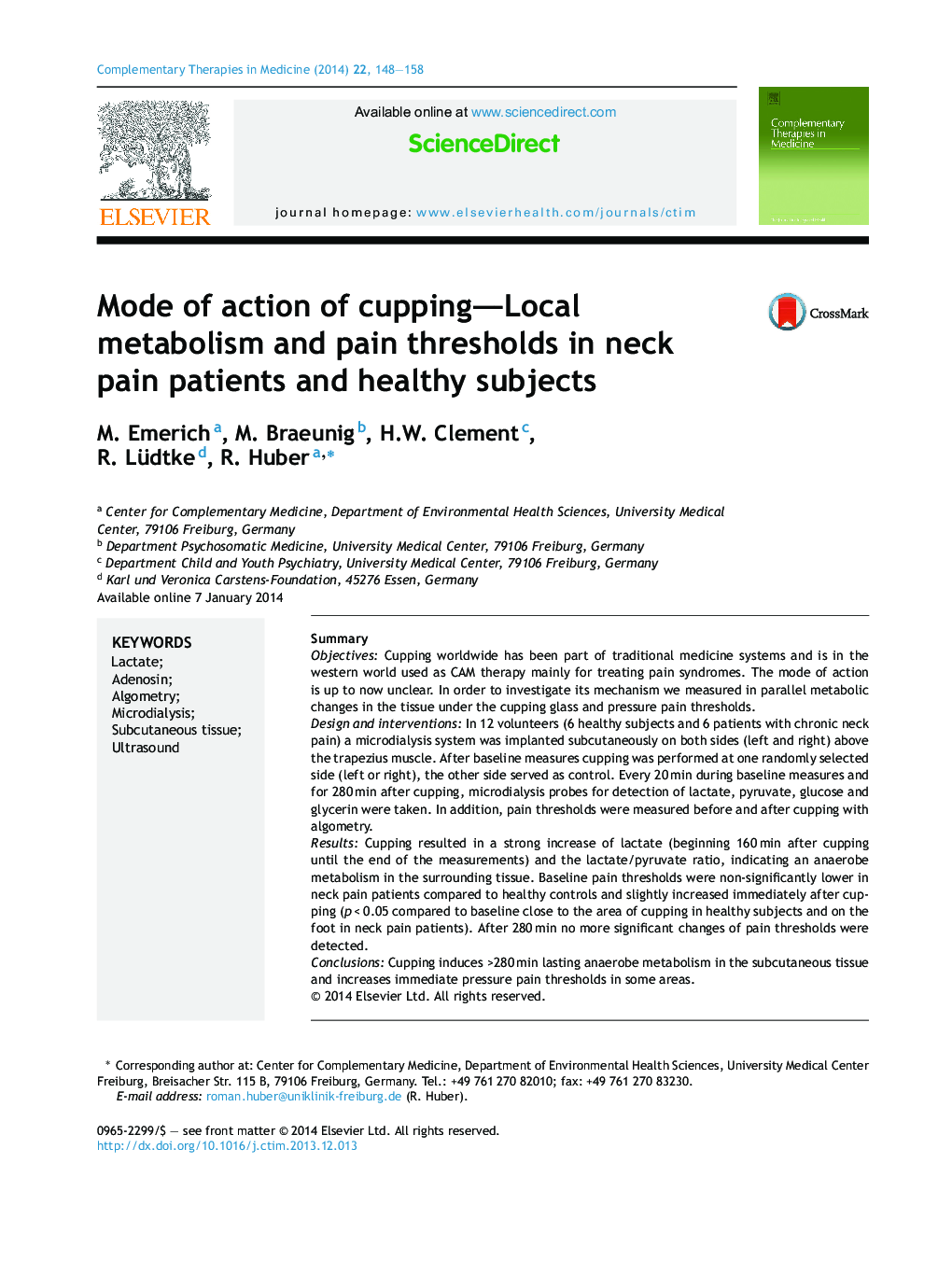| Article ID | Journal | Published Year | Pages | File Type |
|---|---|---|---|---|
| 5865401 | Complementary Therapies in Medicine | 2014 | 11 Pages |
SummaryObjectivesCupping worldwide has been part of traditional medicine systems and is in the western world used as CAM therapy mainly for treating pain syndromes. The mode of action is up to now unclear. In order to investigate its mechanism we measured in parallel metabolic changes in the tissue under the cupping glass and pressure pain thresholds.Design and interventionsIn 12 volunteers (6 healthy subjects and 6 patients with chronic neck pain) a microdialysis system was implanted subcutaneously on both sides (left and right) above the trapezius muscle. After baseline measures cupping was performed at one randomly selected side (left or right), the other side served as control. Every 20 min during baseline measures and for 280 min after cupping, microdialysis probes for detection of lactate, pyruvate, glucose and glycerin were taken. In addition, pain thresholds were measured before and after cupping with algometry.ResultsCupping resulted in a strong increase of lactate (beginning 160 min after cupping until the end of the measurements) and the lactate/pyruvate ratio, indicating an anaerobe metabolism in the surrounding tissue. Baseline pain thresholds were non-significantly lower in neck pain patients compared to healthy controls and slightly increased immediately after cupping (p < 0.05 compared to baseline close to the area of cupping in healthy subjects and on the foot in neck pain patients). After 280 min no more significant changes of pain thresholds were detected.ConclusionsCupping induces >280 min lasting anaerobe metabolism in the subcutaneous tissue and increases immediate pressure pain thresholds in some areas.
